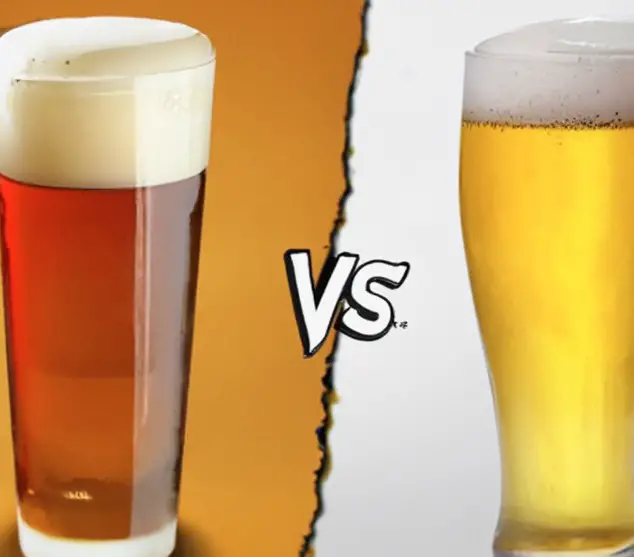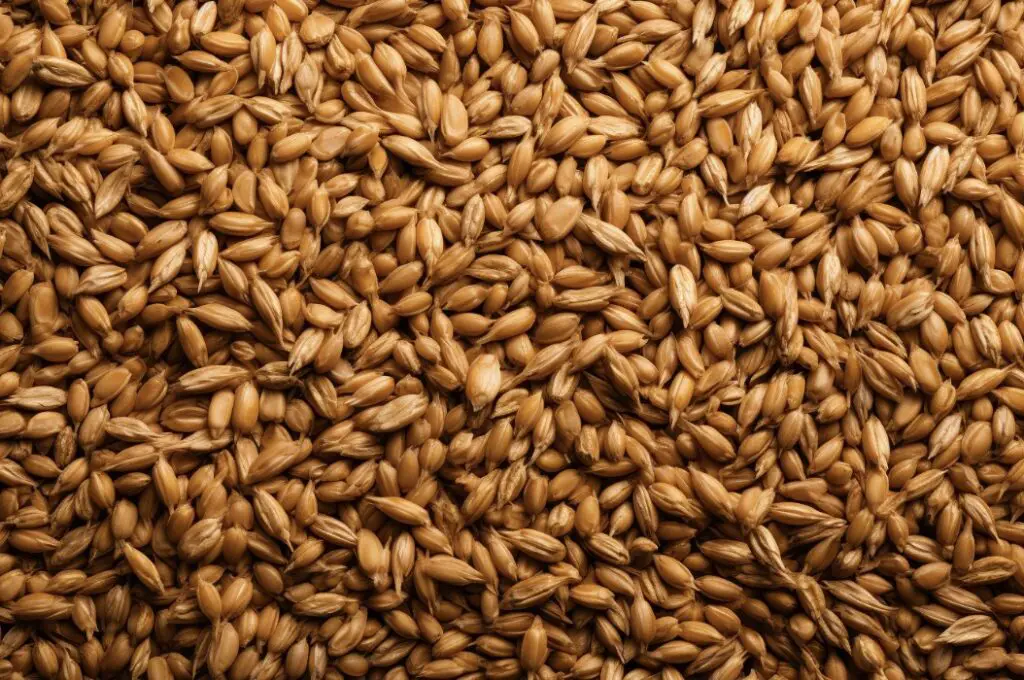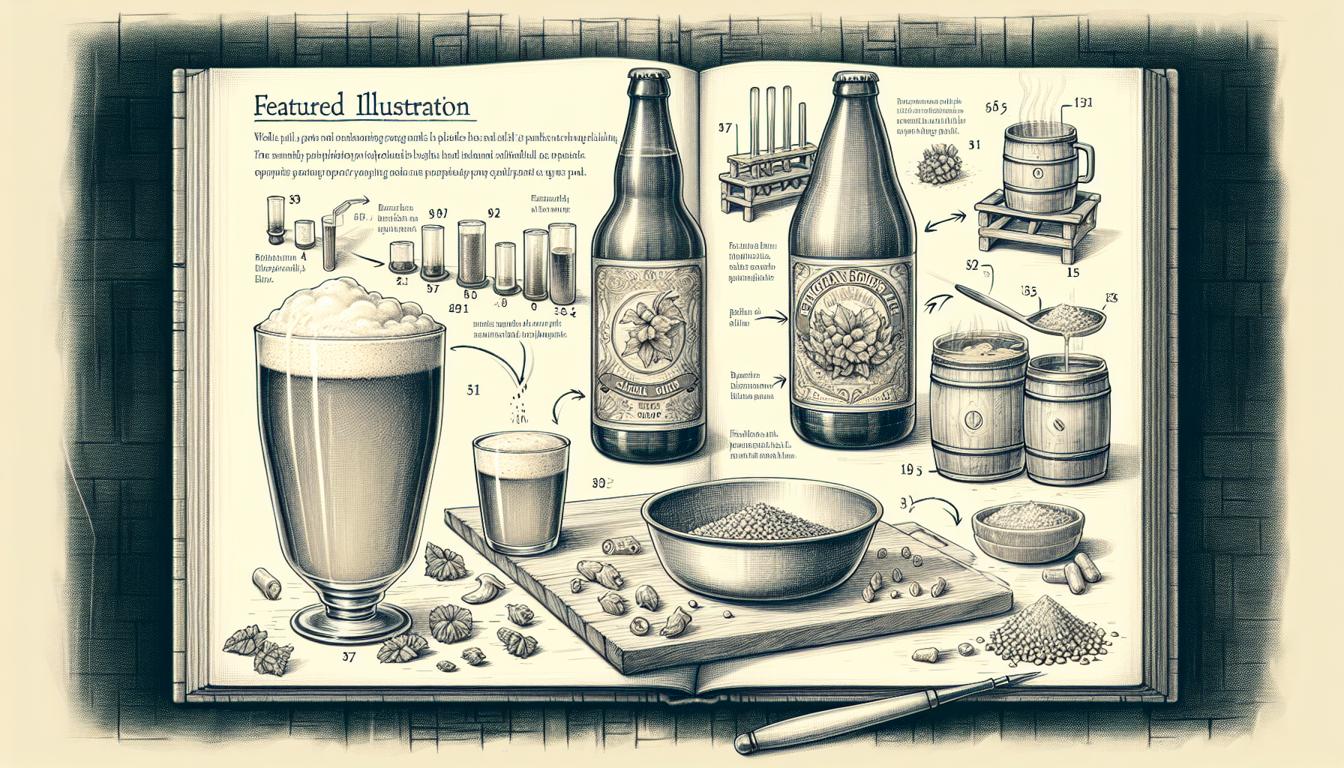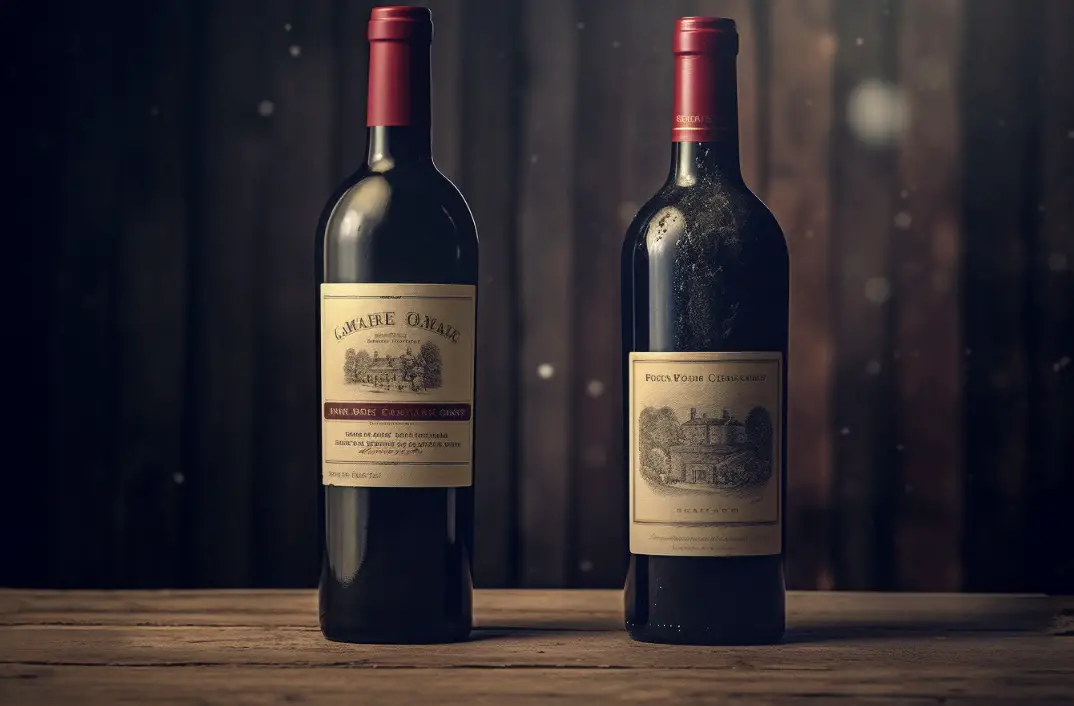Belgian beer has a long and storied history, dating back centuries to the days when monks brewed beer within the walls of their abbeys. One such style that has gained popularity in recent years is the Belgian Blonde Ale.
This style is known for its balance of fruity esters, spicy phenols, and a clean malt character. If you’re looking to embark on a brewing journey that combines tradition, innovation, and a touch of Belgian flair, then look no further than the Belgian Blonde Ale.
A Brief History
The origins of the Belgian Blonde Ale can be traced back to the 20th century, when Belgian brewers sought to create a beer that was lighter in color and body than their traditional Dubbels and Tripels brown ales. This new style was meant to appeal to a wider audience, with a milder flavor profile that was both approachable and refreshing.

Over time, the Belgian Blonde Ale evolved to incorporate a wide range of ingredients and brewing techniques. Today, it is characterized by its pale golden color, moderate alcohol content, and a complex blend of fruity and spicy flavors. It is a true testament to the ingenuity and craftsmanship of Belgian brewers.
Key Characteristics
Appearance
When pouring a Belgian Blonde Ale, you’ll be greeted with a radiant golden hue that glows in the glass. The beer should be clear, with a lively carbonation that forms a fluffy, white head. This head should persist throughout the drinking experience, leaving behind delicate lacing on the sides of the glass.
Aroma
The aroma of a Belgian Blonde Ale is a symphony of fruity and spicy notes. You may detect hints of pear, apple, and citrus, along with a touch of peppery spice. These aromas are a result of the yeast used in fermentation, which produces a wide range of esters and phenols. The malt should also contribute a subtle sweetness, complementing the other aromas.
Flavor
When taking your first sip of a Belgian Blonde Ale, you’ll be greeted with a delightful blend of flavors. The fruity esters from the yeast will dance on your palate, accompanied by a subtle spiciness that adds depth and complexity.

The malt character should be clean and balanced, allowing the yeast-driven flavors to shine. The finish should be dry, with a slight bitterness that lingers, inviting you to take another sip.
Mouthfeel
A Belgian Blonde Ale should have a medium body, with a smooth and creamy mouthfeel. The carbonation should be effervescent, tickling your tongue and enhancing the overall drinking experience. The alcohol content is typically moderate, adding a warming sensation without overpowering the other flavors.
Brewing a Belgian Blonde Ale
Now that we’ve explored the history and key characteristics of the Belgian Blonde Ale, it’s time to delve into the brewing process. Below, you’ll find a detailed recipe that will guide you through each step, ensuring that you create a beer that is worthy of the Belgian tradition.
Recipe
Ingredients:
- 9 lbs (4.1 kg) Pilsner malt
- 1 lb (0.45 kg) Munich malt
- 0.5 lb (0.23 kg) Aromatic malt
- 0.5 lb (0.23 kg) Cane sugar (for fermentability)
- 1 oz (28 g) Saaz hops (4% alpha acid) – 60 minutes
- 0.5 oz (14 g) Saaz hops (4% alpha acid) – 15 minutes
- Belgian yeast (such as Wyeast 1214 or White Labs WLP500)
- Priming sugar (for carbonation)
Instructions:
1. Begin by heating 3 gallons (11 liters) of water in your brew kettle. Aim for a temperature of around 152°F (67°C), which will allow for a good balance between fermentability and body in the finished beer.
2. Once the water reaches the desired temperature, add the crushed grains to a mesh bag and steep them in the water for 30 minutes. This will extract the flavors and sugars from the malt, creating the base for your beer.
3. After the steeping is complete, remove the mesh bag and bring the liquid to a boil. Once boiling, add the 1 oz (28 g) of Saaz hops and start a timer for 60 minutes. This hop addition will provide a subtle bitterness to balance the malt sweetness.
4. With 15 minutes remaining in the boil, add the remaining 0.5 oz (14 g) of Saaz hops. This late addition will contribute a delicate hop aroma, without overpowering the other flavors.
5. After the boil is complete, cool the wort to around 68°F (20°C) and transfer it to a sanitized fermenter. Pitch the Belgian yeast, following the manufacturer’s instructions. This yeast strain is crucial to achieving the characteristic flavors and aromas of a Belgian Blonde Ale.
6. Ferment the beer at a temperature of around 68-72°F (20-22°C) for approximately two weeks, or until fermentation is complete. This will allow the yeast to work its magic, creating those delightful fruity and spicy flavors.
7. Once fermentation is complete, transfer the beer to a secondary fermenter or a keg, leaving behind any sediment (trub) that has settled at the bottom. This will help clarify the beer and improve its appearance.
8. If you’re kegging the beer, carbonate it to a level that suits your taste. If you’re bottling, add priming sugar to the beer before transferring it to bottles. This will create natural carbonation during the bottle conditioning process.
9. Allow the beer to carbonate for approximately two weeks at room temperature, then move it to a cool location for aging. A Belgian Blonde Ale benefits from a short period of aging, allowing the flavors to meld and mellow.
10. Finally, it’s time to enjoy the fruits of your labor! Pour the beer into a glass, admire its golden color, and take a moment to savor the aroma before taking that first sip. Cheers to a job well done!
Key Points to Consider
When brewing a Belgian Blonde Ale, there are a few key points to keep in mind to ensure success:
– Yeast Selection: Choose a Belgian yeast strain that is known for producing fruity esters and spicy phenols. This will be the driving force behind the beer’s flavor profile.
– Fermentation Temperature: Maintain a consistent fermentation temperature within the recommended range for your yeast strain. This will help achieve the desired flavors and prevent off-flavors from developing.
– Malt Selection: Use a combination of Pilsner malt, Munich malt, and Aromatic malt to create a clean and balanced malt character. The addition of cane sugar will increase fermentability and contribute to a dry finish.
– Hop Selection: Choose a hop variety with a mild bitterness and delicate aroma. Saaz hops are a classic choice for Belgian styles, providing a subtle earthiness that complements the yeast-driven flavors.
– Aging: Allow the beer to age for a short period of time, typically a few weeks, to allow the flavors to meld and mellow. This will result in a more harmonious and enjoyable drinking experience.
By paying attention to these key points and following the recipe provided, you’ll be well on your way to brewing a Belgian Blonde Ale that captures the essence of Belgian craftsmanship. So gather your ingredients, fire up your brew kettle, and embark on this brewing adventure. Cheers to your brewing success!





Leave a Reply
You must be logged in to post a comment.